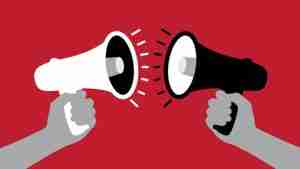A] Introduction
Traditionally, the Indian national census only enumerates Scheduled Castes (SCs) and Scheduled Tribes (STs)- historically marginalized groups explicitly recognized by the Constitution. It left out Other Backward Classes (OBCs) and general castes.
A full caste census, by contrast, would record the caste of every individual (including Other Backward Classes and others) across the country. This has not been done in India in regular census operations since 1931.
With social justice becoming a decisive political narrative, the demand for a caste census has gained momentum. However, the central question arises: Can a caste census help fulfil India’s constitutional mandate of social justice, or would it reinforce caste identities in counterproductive ways?
B] Historical Evolution of Caste Enumeration
Caste-based enumeration in India dates back to the British colonial period, particularly from 1881 to 1931. The 1931 Census was the last one to enumerate all castes. It remains significant because it was the last official baseline of caste demographics for undivided India – its figures were later used by policymakers and commissions in independent India (notably the Mandal Commission) to estimate the population of OBCs.
As mentioned before, post- Independence census excluded detailed caste data except for SCs and STs. Leaders like Jawaharlal Nehru were wary that constant official attention to caste might reinforce the very system of social stratification that the Constitution aimed to dismantle.
However, in hindsight, the decision to stop counting caste (other than SC/ST) created a data vacuum about India’s social structure. Policymakers lacked direct information on the population share and conditions of intermediary and lower caste groups outside of SC/ST. This gap became problematic when India embarked on policies of reservations in education and employment for groups beyond SCs and STs.
In 2011, the Government of India conducted the Socio-Economic and Caste Census (SECC), which collected caste data along with socio-economic metrics. However, this data was never officially released due to internal discrepancies, duplication, and classification problems.
C] Constitutional and Legal Dimensions
Article 15 of Indian Constitution allow the state to make special provisions for the advancement of “socially and educationally backward classes of citizens” (SEBCs), in addition to SCs and STs. Similarly, Article 16 allows reservations in public employment for any backward class of citizens that is not adequately represented in services.
Implementing this requires determining which classes are “backward” and assessing their representation. The Supreme Court, in interpreting Article 16, has held that the government should have “quantifiable data” to show the under-representation of a group before granting reservation.
Additionally, Article 340 empowers the President to constitute a commission to investigate the conditions of backward classes.
The Mandal Commission (1980) used 1931 data to estimate that OBCs comprised 52% of the population. The Indra Sawhney case (1992) upheld the validity of reservations for OBCs but capped total reservation at 50%. The Supreme Court has increasingly required quantifiable data to justify affirmative action. This necessitates updated, credible data on backward classes—data which only a caste census can provide.
Indian Constitution lists “Census” as a Union subject. This means only the central government has the authority to conduct the official Population Census of India. States cannot, on their own include caste in the national census.
However, states have found a legal pathway to conduct their own “caste surveys”. The Collection of Statistics Act, 2008 provides that state governments can collect data on any subject for which they need statistics. Using this, states like Karnataka and Bihar recently undertook their own full caste enumeration exercises, independent of the Census of India. These are not “census” in the technical sense, but functionally similar exercises to gather caste data for the state population.
D] Arguments in Favour of a Caste Census
As already said, Caste Census facilitate data-driven policymaking. This helps in everything from setting reservation quotas to allocating funds for welfare schemes.
On reservations front, one likely outcome is discovering whether the current reservation percentages correspond to the population share of various groups. For SCs and STs, this alignment exists. Their quotas of 15% and 7.5% in central institutions roughly mirror their population share nationally as per census. For OBCs, however, the 27% quota was not based on measured population.
Beyond reservations, it would promote evidence-based governance. Having caste-disaggregated statistics allows the state to identify pockets of deprivation more accurately, and run targeted development schemes.
The Constitution’s goal of equality isn’t just formal but also substantive – lifting up those traditionally disadvantaged. Article 46 (Directive Principles) urges the state to promote the educational and economic interests of weaker sections. One cannot address what one cannot see; thus comprehensive data on all communities’ educational levels, asset ownership, income, etc., broken down by caste, would help fulfil this mandate.
Caste Census would also bring fairness in representation. Accurate numbers are essential for ensuring fair political representation, especially in local bodies and Panchayats where backward class quotas are statutorily mandated.
Moreover, collecting caste data can also reveal internal stratification and inequality. Within OBCs, a caste census can illuminate the relative size of different communities – something the ongoing Rohini Commission on OBC sub-categorization has been grappling with in absence of census data. Proponents argue this could actually help reduce resentment between communities.
Lastly, caste census should be seen an aid to caste annihilation, not an obstacle. The argument goes that by quantifying the disparities, you make them plain and impossible to ignore, thereby galvanizing action to bridge gaps. Ignoring caste in data hasn’t made caste go away; it has only made the problem less visible.
5] Arguments Against a Caste Census
Caste Census holds risk of social fragmentation. Critics argue that caste enumeration may revive and reinforce caste identities, undermining the aspiration of a casteless society. It will solidify caste consciousness at a time when modern forces are gradually chipping away at it.
Hand in hand with reinforcing caste identities comes the apprehension of political misuse of the data. India’s politics has long been influenced by caste coalitions and vote-banks politics. If precise numbers of every caste group are known, political parties might engage in even more sectarian mobilization.
Data reliability and quality is another major Issue. The example of SECC 2011 looms large. If the caste responses are not credible, we could end up with contested numbers that create more disputes than they resolve. The possibility of intentional misreporting is also likely.
In contrast, sample surveys like NSS or the periodic India Human Development Survey have captured caste information reasonably and could be improved and used instead, avoiding the risks of a full census.
Caste census holds potential for social stigma and privacy invasion. Listing one’s caste on a government form can be a sensitive matter. Especially for those from formerly “untouchable” castes or very marginalized groups, there is a fear of stigma if such data is not handled carefully. Thus, enumerating individuals by caste requires robust data protection frameworks to prevent misuse and discrimination.
Caste census might embolden caste-based claims and agitations. India has seen agitations by communities like Jats, Patidars, Marathas, Kapus etc. in the last decade, each seeking inclusion in OBC category or separate quotas. With official data, these movements could intensify. Critics argue that beyond a point, constant caste-based claims can undermine the meritocracy and the common national identity.
Some critics believe that India should move towards measures based on economic criteria rather than caste. They argue that a caste census is a throwback to communitarianism when India’s focus should be on poverty alleviation irrespective of caste. They contend that poverty has spread beyond traditional lower castes and many OBC or even SC individuals have advanced economically – so schemes should target poor Indians as a whole.
E] Recent Developments (2021–2025)
The most significant development post-2011 was Bihar’s independent caste survey (2023). It revealed that OBCs and Extremely Backward Classes (EBCs) made up over 63% of the population. This led to heightened demands for proportional reservation.
However, the Union government (2021–2024) consistently declined to conduct a nationwide caste census, citing administrative and legal hurdles.
The Supreme Court, while not mandating a caste census, allowed states to conduct their own surveys, clarifying that these exercises do not violate central jurisdiction if conducted under state welfare mandates.
Political parties such as the Congress, RJD, JD(U), and DMK supported the caste census push, whereas the BJP took a cautious stand, balancing its OBC outreach with broader concerns over caste polarisation.
F] Comparative Perspective
Globally, countries such as the United States, UK, and South Africa gather data on race and ethnicity to measure social disparities. These practices have enabled effective implementation of anti-discrimination laws and welfare schemes.
However, the Indian context is more layered. While race is largely binary in the West, caste is graded and variegated, with over 5,000 communities. Thus, importing foreign frameworks without adaptation may be ineffective.
G] Political Economy of Social Justice
A caste census in India would not be merely a data-collection exercise, it has profound implications for the political economy .
Caste has long been a centrepiece of electoral mobilization in India, particularly at state and local levels. A fresh caste census would provide hard numbers on each community’s share of population, which can translate roughly to potential vote share. This will likely prompt political parties to recalibrate their strategies.
In the 1990s, after Mandal, there was a surge of OBC-led parties which changed the political landscape, dethroning some of the traditional upper-caste dominated order in Hindi heartland.
Another aspect is the 50% cap on reservations for government jobs/education that currently exists due to Indra Sawhney (except in some states with special laws). If a caste census shows 75% or 80% of Indians belong to constitutionally defined backward classes (OBC/SC/ST) – a figure often cited by Mandal proponents – there will be a very strong moral argument to revisit the cap.
Ultimately, identity politics and new caste coalitions may get revamped. Political coalitions such as “Pichhda, Dalit, Alpsankhyak” (Backward, Dalit, Minorities) are gaining traction. A caste census would provide the empirical scaffolding to strengthen or challenge these emerging alliances.
A caste census could inspire new narratives such as “majority rules” – i.e., policies should reflect the will or need of the numeric majority (which would be the backward classes). This can be a double-edged sword if taken to extreme populism (ignoring the rights of minorities, be they upper castes or religious minorities).
H] Challenges and Ethical Concerns
There’s a tension between acknowledging caste realities for policy and perpetuating caste as a permanent social marker. Policies must ensure that caste data empowers, not stigmatises. The whole exercise should be a step towards caste erasure rather than caste reinforcement.
Apart from that, the whole exercise is marred with several Operational Challenges. India’s caste landscape is hyper-local and complex. Properly categorising thousands of jatis and sub-castes is operationally difficult and fraught with inconsistencies. Capacity-building of enumerators is crucial.
I] Conclusion: Between Empowerment and Fragmentation
Currently, caste census has become a political hot potato in India. It represents both a promise and a peril.
On one hand, it could significantly enhance the constitutional commitment to social justice by enabling evidence-based policymaking and empowering backward communities. On the other, it risks deepening caste fault lines and derailing the long-term goal of social integration.
The way forward lies in a middle path. Caste census should be conducted through a scientific and confidential process, led by statutory commissions. Pair the census with legal safeguards, data protection legislation, and public awareness to avoid misuse.
Secondly, the data should not just be for quotas, but for holistic human development in education, health, and employment. Foster a national discourse that recognises caste realities without reinforcing casteism.
It is time for India to choose whether to remain trapped in the historical silence on caste data or step forward into a future of informed, inclusive governance. A caste census, if done well, could serve as a democratic mirror—one that helps India see and serve all its citizens, especially the historically marginalised.



